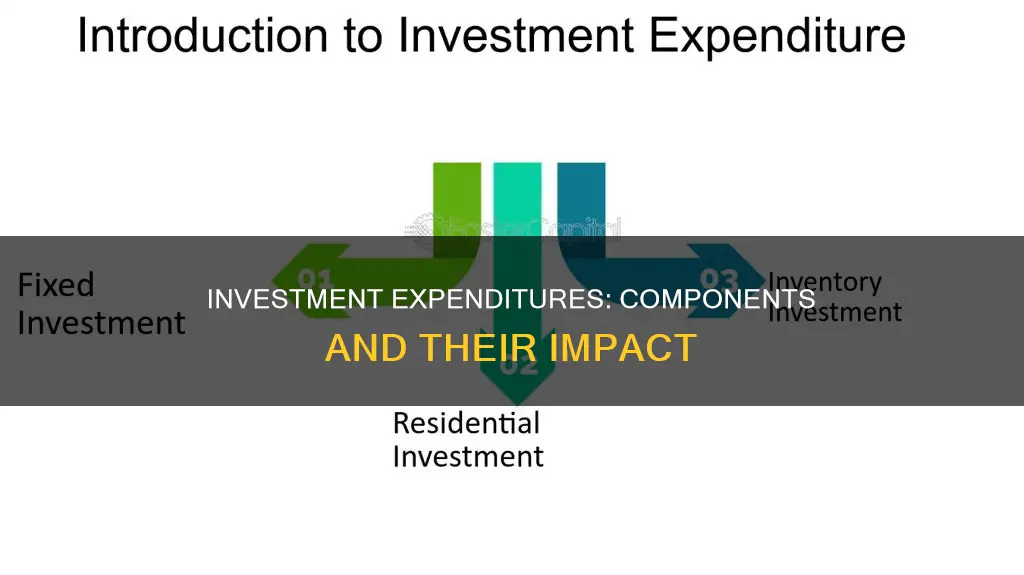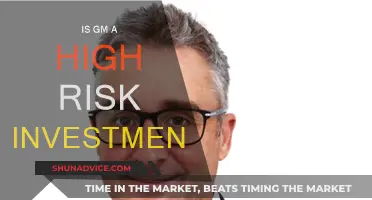
Investment expenditures are a key component of a nation's economic health, and they encompass a range of activities that contribute to the growth and stability of the economy. In simple terms, investment expenditures refer to the money spent by businesses on goods and services that will enhance their future production capabilities. This includes the purchase of capital goods, such as machinery, equipment, and real estate, as well as investments in new construction and improvements to existing structures. Investment expenditures also include changes in private inventories, which are the stockpiles of raw materials, intermediate goods, and finished products that businesses use to manage their production and sales. These expenditures are a critical aspect of macroeconomic analysis, impacting both short-term business cycles and long-term economic growth. They are one of the four types of expenditures on gross domestic product (GDP), alongside consumption expenditures, government purchases, and net exports.
| Characteristics | Values |
|---|---|
| Definition | Business expenditures on plant and equipment, plus residential construction, plus the change in private inventories |
| Types | Gross private domestic investment, including private nonresidential fixed investment, private residential fixed investment, and the change in private inventories |
| Nonresidential fixed investment | Fixed investment in items not for residential use, e.g. buildings, machinery, equipment, and intellectual property products |
| Residential fixed investment | Primarily private residential construction |
| Change in private inventories | The change in the physical volume of inventories owned by private businesses, valued at average prices of the period |
| Average percentage of annual GDP | 10% to 15% |
What You'll Learn

Non-residential fixed investment
In the context of investment spending, non-residential fixed investment is an important component of a country's Gross Domestic Product (GDP). It is often monitored by economists as it can provide insights into the strength and direction of the overall economy. For instance, a positive change in private inventories suggests that demand is lower than supply, indicating a potential decrease in production in the upcoming quarters. Conversely, a negative change in private inventories implies that demand exceeds supply, suggesting an increase in production to meet future demand.
The level of non-residential fixed investment can be influenced by various factors, such as interest rates, expected future real GDP growth, and current production capacity. Higher interest rates, for instance, tend to increase capital costs, making it more challenging for firms to undertake new projects, resulting in lower investment spending. On the other hand, lower interest rates can stimulate investment spending by making it easier for firms to obtain financing for their projects.
Debt Investment in India: Understanding the Basics
You may want to see also

Residential fixed investment
The scope of residential fixed investment is broad, encompassing a wide range of structures that serve as residences. These can include single-family homes, apartment buildings, condominiums, and other types of housing units. The equipment within these residences, such as appliances, furniture, and other durable goods owned by the landlord and provided for tenant use, are also factored into residential fixed investment.
This type of investment is particularly sensitive to interest rates. When interest rates are favourable, it can stimulate residential construction and purchases, as it impacts the affordability of housing and mortgage payments. Additionally, interest rates influence project profitability, as the return on investment must surpass the cost of borrowing for a project to be viable.
How Investment Advisors Make Their Money
You may want to see also

Capital expenditure
CapEx is often used to undertake new projects or investments and can include repairing a roof, purchasing equipment, or building a new factory. It is considered a capital expenditure when an asset is newly purchased or when money is used to extend the useful life of an existing asset.
The calculation of free cash flow deducts capital expenditures. Free cash flow is one of the most important calculations in finance and is the basis for valuing a company. The formula for free cash flow is:
FCF = Cash from Operations – Capital Expenditures
There are normally two forms of capital expenditures: maintenance capex and growth capex. Maintenance capex refers to expenditures to maintain the current level of a company's operations, while growth capex enables an increase in future growth.
The decision of whether to expense or capitalise an expenditure is based on how long the benefit of that spending is expected to last. If the benefit is less than one year, it must be expensed on the income statement. If the benefit is greater than one year, it must be capitalized as an asset on the balance sheet.
Equity and Non-Marketable Investments: What's the Difference?
You may want to see also

Revenue expenditure
Examples of revenue expenditures include:
- Employee salaries
- Utility bills
- Property rent
- Selling costs
- Research and development (R&D)
- Repairs and maintenance of assets
- Office supplies
- Insurance premiums
- Legal fees
- Advertising
Make Her Invest in You: Create a Compelling Connection
You may want to see also

Changes in private inventories
The mathematical relationship between inventory investment and inventories can be expressed as follows:
> In discrete time, the end-of-period stock of inventories minus the beginning-of-period stock of inventories equals the flow of inventory investment per time period.
> In continuous time, the time derivative of the stock of inventories equals the instantaneous flow of inventory investment.
Inventory investment can be further broken down into intended and unintended inventory investment. A positive flow of intended inventory investment occurs when a firm expects high sales and deliberately produces more than it expects to sell. Conversely, a negative flow of intended inventory investment occurs when a firm decides that its current level of inventories is too high and deliberately produces less than what it expects to sell.
Unintended inventory investment, on the other hand, occurs when customers buy a different amount than expected. If customers buy less than expected, inventories build up and unintended inventory investment is positive. If they buy more than expected, inventories decline and unintended inventory investment is negative.
In macroeconomics, equilibrium in the goods market occurs when supply equals demand. If there is no unintended inventory investment, the market is in equilibrium. However, if there is a difference between supply and demand, there is disequilibrium in the goods market, which is reflected in positive or negative unintended inventory investment.
The change in private inventories is closely monitored by economists as it can provide insights into future economic growth. A positive change in private inventories suggests that demand is less than supply, indicating that production may decrease in the coming quarters. Conversely, a negative change in private inventories suggests that demand is greater than supply, implying that production may need to increase.
In summary, changes in private inventories are an important aspect of investment spending and can have significant implications for businesses and the overall economy.
Understanding Sustainable Yields for Long-Term Investment Success
You may want to see also
Frequently asked questions
Investment expenditures are expenditures made by the business sector on final goods and services, or gross domestic product, especially the purchase of productive capital goods.
There are two types of investment spending: planned investment spending (spending that was intended) and unplanned inventory investment (an unforeseen increase or decrease in inventories due to lower or higher than expected sales, respectively).
Investment expenditures can be calculated by rearranging the equation for GDP:
I = GDP - C - G - NX
The main factors affecting investment expenditures are interest rates, expected real GDP growth, and current production capacity.
Investment expenditures refer to the actual spending on goods and services, or gross domestic product, by the business sector. Investment is a broader term referring to the sacrifice of current consumption to enhance future production capabilities.







